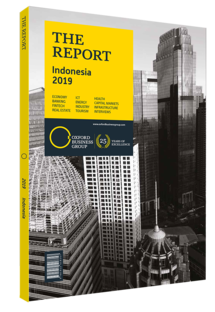Private investment is key to road development in Indonesia
If infrastructure development has not matched the rate of economic growth in Java, outside of the most populous island the challenges are even starker. As a result, the administration of President Joko Widodo has increasingly focused on building major roads outside of Java – namely the Trans-Kalimantan, TransPapua and Trans-Sumatra toll road networks.
The length of new toll roads constructed in the first three years of the Widodo administration was greater than total length of toll road construction in the preceding 40 years combined. Indonesia’s government projects that toll roads spanning more than 714 km will begin operation in 2019, with a total investment of Rp124trn ($8.79trn). These include 575 km of the Trans-Sumatra Toll Road, 99 km of the Balikpapan-Samarinda Toll Road in East Kalimantan on Borneo, and 40 km of the Manado-Bitung Toll Road on the island of Sulawesi in the East.
President Widodo has promised that the passage between Bakauheni and Palembang on the Trans-Sumatra toll road will be completed by April 2019, meaning Indonesians will be able to take their car from Jakarta to Palembang during the Eid Al Fitr exodus at the end of Ramadan. The entire Trans-Sumatra Toll Road network is scheduled for completion in 2024, allowing people to drive from the southern tip near Java all the way to the north, close to Malaysia.
Challenges
The projects are not without their problems, however. Land acquisition has slowed down development, and construction requires different methods than those in Java due to the different geographic and climatic conditions. The more remote regions of the country can also pose security challenges. In December 2018 Papuan separatists killed 16 construction workers on the Trans-Papua road project, suggesting more work is needed to win popular support for big-ticket projects among some local communities. The feasibility of major toll roads in more sparsely populated parts of the vast archipelago has also been questioned. Adri Poesoro, an economist at the World Bank in Jakarta, told OBG that government intervention is often required to make toll road projects outside of Java reach the point of feasibility. He said parts of Sumatra would also benefit little from toll roads at their current stage of development. Even in Java, where most of the country’s economic activity takes place, many trucks are using old roads to avoid paying tolls, according to Julian Smith, global transport and logistics leader at PwC.
The length of new toll roads constructed in the first three years of the Widodo administration exceeded the length of toll road construction in the preceding 40 years Better enforcement of loading limits on non-toll roads will likely be required to encourage truck drivers to use toll roads instead of their regular routes. “Given that the toll is not very expensive, you would expect trucks to automatically use the new road, but this is not happening. Trucks instead damage the old road, which is not designed for the volume of traffic it is receiving,” Smith told OBG.
Progress
Nevertheless, progress is expected to continue on expanding the national toll road network, with stakeholders hopeful that usage will increase as drivers become accustomed to the convenience. The national toll road operator, Jasa Marga, has set aside Rp27trn ($1.9bn) for capital expenditure in 2019, 8.64% lower than 2018. Although construction will start on some of the new toll roads, the majority of capital expenditure has been earmarked for the completion of ongoing projects. Unfinished projects include Medan-Kualanamu-Tebing Tinggi in North Sumatra; Balikpapan-Samarinda in East Kalimantan; and Manado-Bitung in North Sulawesi, all of which Jasa Marga says will be completed some time in 2019.
You have reached the limit of premium articles you can view for free.
Choose from the options below to purchase print or digital editions of our Reports. You can also purchase a website subscription giving you unlimited access to all of our Reports online for 12 months.
If you have already purchased this Report or have a website subscription, please login to continue.

